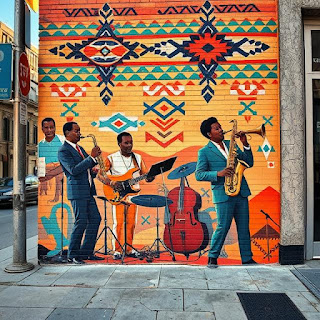The Power of Art and Culture: A Journey Through Creativity, History, and Humanity
Introduction
Art and culture are the heartbeats of human civilization. They define our identity, shape our values, and connect generations through visual, performing, and written expressions. From ancient cave paintings to modern digital art, from folk dances to global film festivals, art and culture influence how we perceive the world and ourselves. In this post, we explore the deep significance of art and culture in human life, their evolution, impact on society, and their role in the modern world.
What is Art?
Art is the creative expression of human imagination. It includes painting, sculpture, music, dance, theater, literature, photography, film, architecture, and digital media. Art reflects emotions, tells stories, and challenges perceptions. It can be beautiful, shocking, political, abstract, or realistic—but it always aims to communicate something meaningful.
Forms of Art:
Visual Arts: Drawing, painting, sculpture, photography, architecture.
Performing Arts: Music, dance, theater, opera, circus arts.
Literary Arts: Poetry, novels, essays, storytelling.
Digital & Multimedia Art: Animation, video art, digital installations, NFTs.
Understanding Culture
Culture is the collective way of life of a group of people. It includes traditions, beliefs, customs, food, festivals, clothing, and art. Culture is passed down from generation to generation and evolves over time. It gives a sense of belonging and identity.
Elements of Culture:
- Language and Literature
- Customs and Traditions
- Religious Beliefs
- Festivals and Rituals
- Cuisine
- Music and Dance
The Evolution of Art and Culture
Human history is filled with artistic expressions and cultural milestones.
1. Prehistoric Period:
Cave paintings in Lascaux, France (17,000 years old)
Tribal music, dances, and sculptures
2. Ancient Civilizations:
Egyptian pyramids, Indian temples, Greek sculptures
Storytelling through epics like Mahabharata, Odyssey
3. Medieval and Renaissance Art:
Gothic cathedrals, religious art, stained glass
Masters like Leonardo da Vinci, Michelangelo, Shakespeare
4. Modern and Contemporary Art:
Impressionism, surrealism, abstract art
Digital art, graffiti, installations, AI-generated art
Art and Culture Around the World
India:
- Rich in dance forms (Bharatanatyam, Kathak), music (Carnatic, Hindustani), and festivals
- Classical literature like Ramayana and Vedas
- Bollywood and folk arts
Europe:
- Renaissance art, classical music, literature
- Ballet, opera, museums (Louvre, Vatican Museums)
Africa:
- Tribal art, oral storytelling, drumming, beadwork
- Cultural festivals celebrating nature, ancestors, and unity
America:
- Indigenous art and culture, jazz, hip-hop, Hollywood
- Art movements like Abstract Expressionism
East Asia:
- Chinese calligraphy, Japanese tea ceremonies, Korean K-pop
- Buddhist temples, martial arts, traditional paintings
Importance of Art and Culture in Society
1. Education and Awareness
Art and culture teach history, ethics, language, and creativity. Museums and exhibitions provide real-world learning.
2. Social Cohesion
Cultural events unite communities, promote diversity, and celebrate shared identities.
3. Economic Impact
Creative industries contribute billions to the global economy—film, fashion, design, tourism, and handicrafts.
4. Personal Growth
Engaging in art enhances emotional well-being, critical thinking, and self-expression.
Modern Influences on Art and Culture
1. Technology and Digital Transformation
- Digital museums, NFTs, AI-generated art
- Online music platforms and e-books
2. Globalization
- Fusion of traditions (e.g., Indo-western music)
- International art exhibitions and collaborations
3. Social Media and Trends
- Instagram art, TikTok dances, YouTube music
- Artists gaining fame through digital platforms
Preserving and Promoting Art and Culture
Governments, NGOs, and individuals play a role in preserving heritage.
1. Cultural Heritage Sites
- UNESCO World Heritage sites protect landmarks
- Restoration projects and laws prevent destruction
2. Education and Workshops
- Art schools, literature clubs, online tutorials
- Government grants for artists and cultural practitioners
3. Festivals and Exhibitions
- Jaipur Literature Festival, Coachella, Venice Biennale
- International Days (World Music Day, Art Day)
Art Therapy and Mental Health
Art therapy is a recognized method for treating anxiety, depression, trauma, and stress. Activities like painting, music, dance, and journaling promote healing and relaxation.
Challenges Faced by Artists and Cultures
- Lack of funding and recognition
- Cultural homogenization due to globalization
- Copyright issues and digital piracy
- Destruction of heritage sites in conflict zones
How to Support Art and Culture
- Visit museums, exhibitions, and cultural festivals
- Buy from local artisans and creators
- Promote awareness through blogging and social media
- Encourage art education for children
Affiliate Product Suggestions
Here are some art and culture-related affiliate products for monetization:
Books on Art and Culture:
- The Story of Art by E.H. Gombrich
- Art: A World History (Affiliate link)
Art Supplies:
Professional sketch kits
Watercolor brush sets
Digital drawing tablets (Wacom, XP-Pen)
Online Art Courses:
“The Ultimate Drawing Course – Beginner to Advanced”
“History of Western Art”
“Indian Classical Dance – Online Lessons”
Conclusion
Art and culture enrich our lives, bridge differences, and inspire generations. They are not just a reflection of society—they shape it. Whether you are a painter, a dancer, a writer, or simply an admirer, embracing art and culture makes us more human. Let us preserve, celebrate, and promote these treasures for a better future.
Art, Culture, World Culture, History, Digital Art, Traditional Art, Art Therapy, Global Cultures, Creative Expression












Comments
Post a Comment